Lemon Balm
- Scientific Name: Melissa officinalis
- Plant Family: Laviatae
- Parts Used: Leaves – fresh or dried
- Actions: Carminative, Anti-spasmotic, Anti-depressive, Diaphoretic, Hypotensive, Anti-emetic, Hepatic, Nervine, Tonic
- Constituents: Rich in essential oil containing citral, citronellal, geraniol and lindol; bitter principles, flavones, resin.
- How does it work? Lemon balm contains chemicals that seem to have a sedative, calming effect. It might also reduce the growth of some viruses.
General Overview:
A member of the mint family, lemon balm is considered a “calming” herb. It has been used for centuries to help heal wounds, treat venomous insect bites and stings, induce relaxation and a sense of well being, improve appetite and aid digestion. Lemon balm, known and named for its fresh, lemony scent, has long been used as a culinary, cosmetic and medicinal and magical herb.
Note: Lemon Balm, though often called Bee Balm, should not be confused with another plant commonly called Bee Balm (Mondara dydima).
The botanical name, melissa, is Greek for “bee”. Lemon balm has been cultivated in the Mediterranean region for about 2000 years. The Muslim herbalist Avicenna recommended lemon balm “to make the heart merry”. Paracelsus claimed this herb could completely revitalize the body and called it the “elixir of life”, and 14th century French King Charles V drank its tea every day to keep his health.
Lemon balm is used for digestive problems, including upset stomach, bloating, intestinal gas (flatulence), vomiting, and colic; for pain, including menstrual cramps, headache and toothache; and for mental disorders, including hysteria and melancholia.
Lemon balm is excellent for treating anxiety and battling some hard-to-treat viruses. The list of symptoms from anxiety is vast but melissa tackles them all bravely. It is equally fearless when it comes to taking on viruses as daunting as Mono and Herpes. This is an herb every healer wants in the medicine cabinet.
In Ayruvedic medicine, Lemon Balm’s energy is pungent, sour-sweet, cool, and wet. Crushed leaves rubbed on the skin in the garden helps keep away bugs.
Many people believe lemon balm has calming effects so they take it for anxiety, sleep problems, and restlessness. Lemon balm is also used for Alzheimer’s disease, attention deficit-hyperactivity disorder (ADHD), an autoimmune disease involving the thyroid (Graves’ disease), swollen airways, rapid heartbeat due to nervousness, high blood pressure, sores, tumors, and insect bites.
Lemon balm is inhaled as aromatherapy for Alzheimer’s disease. Some people apply lemon balm to their skin to treat cold sores (herpes labialis).
Description:
A familiar garden plant with its fresh, green, nettle shaped leaves and strong bushy growth, lemon balm is native to southern Europe and was probably introduced to the north by the Romans. The creamy flowers are undistinguished and grow in loose clusters from midsummer. The hardy root is perennial.
Lemon balm has the square stems indicative of the mint family with green, oval, finely toothed leaves that grow opposite each other on the stem. The leaves also have fine hairs that capture morning dew and helps keep the plant moist. Flowers are small and yellow to white depending on soil type. It can vary in height between 12 inches to well over 3 feet.
Cultivation:
Easy to grow and tolerant of most soils, it does especially well on a fairly rich, moist ground in a sheltered, sunny position. Sow seeds in the spring or late summer; divide the roots in the fall or early spring; take cuttings in the summer. Keep the plants well weeded.
It prefers moist, not soggy, loamy soil in full sun but will develop more volatile oils when grown in drier, shadier soils. It can tolerate a vast pH range from 5 to 8 in the soil. Lemon balm flowers in the summer and provides an excellent source of nectar for bees and hummingbirds.
Barely cover seed to germinate in 1-2 weeks at room temperature. Set out at 12-15 inches apart in full sun and rich soil. This perennial plant typically gets 12-18 inches tall.
Like any mint, it can be aggressive–it spreads by runners, self-seeds, and can be propagated by cuttings. But it’s a plant, not a monster. I have my lemon balm in partial shade, next to my cabbages and some other aromatic herbs. It has formed some nice thick clumps in two years, but it is not taking over the garden by any means. If you feel concerned, plant it in a pot and sink the pot in the soil.
It is hardy to zone 4: -30°F. It is a good companion plant for members of the brassica family, and deer don’t usually eat it. For drying, harvest leaves just before or after it flowers. Don’t harvest when it’s wet or the leaves will discolor.
Collection
Leaves may be harvested two or three times a year between early summer and early fall. They are gathered by cutting off the young shoots when they are approximately 12 in long. Harvest them for drying as the flowers begin to open. Dry quickly and carefully in the dark, or in the shade, to preserve their color. They should be dried at a temperature not above 95° F.
Unlike other herbs which are at their best when the dew has dried off them in the morning, Lemon Balm should be harvested in mid to late afternoon when the oils are strongest.
Lemon balm can be harvested for fresh use once or twice a week and leaves can be kept in the fridge for a few days, or be frozen. Leaves should be handled delicately as they tend to bruise and turn black.
Hang sprigs to dry in dark cool place. Be sure to keep out of moisture, as leaves are prone to browning and more susceptible to mold. Store dried leaves in air tight container. The leaves lose some of their flavor when dried.
Medicinal Uses
Lemon balm is an excellent carminative herb that relieves spasms in the digestive tract and is used in flatulent dyspepsia. Because of its anti depressive properties, it is primarily indicated where there is dyspepsia associated with anxiety or depression, as the gently sedative oils relieve tension and stress reactions, thus acting to lighten depression.
A little patch of lemon balm in the garden, particularly near the bedroom windows, brings uplifting energy on dark days. We get a lot of cloudy days here in the Pacific Northwest. I’ve found that a bit of lemon balm growing in close proximity to my home brings just enough sunny energy to give my family the lift we need during long spans of dark weather. When the going gets particularly tough, we pick a few sprigs for our drinking water, but most of the time Lemon Balm’s presence is enough.
Lemon balm has a tonic effect on the heart and circulatory system, thus lowering blood pressure. It can be used in feverish conditions such as flu.
European studies have proven the anti-viral effectiveness of lemon balm specifically in shortening the healing time of herpes cold sores and outbreak of shingles. Other studies are now being conducted on the use of lemon balm in the treatment of Grave’s disease, hyperthyroid, and Alzheimer’s/dementia.
Lemon balm’s sedative properties are fairly mild but its nervine properties command attention. It soothes the nervous system in an effective and yet gentle way. The list of illnesses it’s used for is seemingly endless since anxiety is a natural symptom of being sick. This herb works directly on the thyroid to lessen the output of excess T3 (a common cause of nervous tension).
“Balm is sovereign for the brain, strengthening the memory,
and powerfully chasing melancholy.”
~John Evelyn
The stomach is also soothed by Lemon balm’s presence. Used as a tea, this herb helps the body to digest food more effectively. The essential oil present in fresh or well preserved lemon balm does wonders to decrease painful spasms that haunt sufferers of IBS. The carminitive properties in this minty little herb are favorites with parents of children with fussy stomachs as well.
For headaches, the body uses lemon balm’s vasodilatation properties to ease the tension. Constricted blood vessels are the usual culprit for throbbing temples. Flu symptoms including fever also make use of lemon balm’s diaphoretic properties to bring down the basal temperature.
As soothing as this herb is, it’s easy to see why it’s used as an anti-depressive. lemon balm treats multiple symptoms throughout the body. Many depression problems are relieved when other aches and pains the mind takes for granted are erased. This is what earns lemon balm its name “Herb of Good Cheer.”
This herb makes a good tea, especially for iced tea, and give a nice lemony sweetness to black tea. The tea is drunk for colds, excitable children (whether you are one or have some!), indigestion, and feeling a little blue; lemon balm is mildly sedative and antidepressant. Drink it as a tea for fevers, colds, and headaches, as it promotes perspiration and is soothing and refreshing.
Lemon balm is a favorite for herbalists treating symptoms of anxiety and sleeplessness. It is soothing both in scent and in taste. Headaches, stomach aches, nausea, depression and nervousness seem to melt under Lemon Balm’ tender, loving hand. It’s easy to give to children and adults due to its pleasant, lemony taste. Patients who are already taking barbiturates will note that lemon balm increases their effectiveness.
Both cold sores and genital herpes are caused by the same virus family called Herpesviridae. This family also includes chicken pox, shingles, mono, and Sixth disease (roseola infantum). Lemon balm is often referred to in literature as a strong antiviral, but it specializes in treating members of this virus family. Other viruses, like the flu, may have decreased symptoms after using lemon balm, but the flu virus itself shows little sign of damage when this herb is brought into play.
Hyperthyroidism displays many of the symptoms lemon balm solves. The overactive thyroid gland produces too much T3 which causes nervous tension. As lemon balm is ideally suited to treat anxiety and blocks iodine from converting T4 into T3, this plant is the perfect friend for people with this disease.
A strong infusion added to the bath water is relaxing and said to promote menstruation and to ‘comfort the sinews.’ It also has some antibacterial action and makes a nice mouthwash.
‘The juice of Balm glueth together greene wounds.“
~Gerard
Crushed fresh leaves bound to a wound will help prevent infection. Dioscorides recommended application of lemon balm leaves to “the stings of venomous beast and the bites of mad dogs”. He also stated “(the leaves) being smeared on they well assuage the pains of gout.”
The herbal known as “The Grete Herball” written by Gerad, recommended using balm as an ointment for all aches; steeped in wine to “keep one from swooning if the cause be cold.” The “Horitus Sanitatis” recommends placing the dried leaves of lemon balm atop the head to “…draw out congestion and leave one light headed.” This book also states lemon balm is helpful to clear the chest, relive difficult breathing, and “helpeth conception more.”
Lemon Balm is anti-viral, so the tea is great to drink if you’re feeling under the weather. The hot tea brings on a sweat that is good for relieving colds, flus and fevers and an anti-viral agent has been found that combats mumps, cold sores and other viruses. James Duke mentions that Lemon Balm can help with Chronic Fatigue Syndrome and Shingles, due to the anti-viral action.
One of Lemon Balm’s key medicinal qualities is as a tranquilizer. It calms a nervous stomach, colic, or heart spasms. The leaves are reputed to also lower blood pressure. It is very gentle, although effective, so is often suggested for children and babies.
Lemon Balm tea has been shown to inhibit the division of tumor cells. It may also be beneficial to those with Grave’s disease-studies indicate that the herb slightly inhibits the thyroid-stimulating hormone and restricts Grave’s disease, a hyperthyroid condition.
Lemon Balm’s anti-histamine action is useful to treat eczema and headaches and accounts for the centuries old tradition of placing the fresh leaf on insect bites and wounds. A fomentation of Lemon Balm may also help reduce the swelling associated with gout.
Nicholas Culpepper, an astrologer herbalist of seventeenth century stated lemon balm was an “Herb of Jupiter and under the (astrological) sign Cancer, and it strengthens Nature (the body) much in al its actions.” Culpepper also added lemon balm could be used to “…open obstructions of the Brain; and hath so much purging quality in it…as to expel those melancolly vapors from the Spirits and Blood which are in the Heart and Arteries… it is food to wash aching Teeth therwith… It is good for the Liver and Spleen.” Following the tradition of Galenic medicine of his time, he classified lemon balm as hot in the 2nd degree, dry in the 2nd degree affecting cold, moist conditions of the lungs, heart, and stomach.
Lemon balm was an herb dubbed by Paracelsus as “the elixir of life”. He combined lemon balm with carbonate of potash creating what he called ‘Primum Ens Melissae’.
Essential Oil:
It has been used as an insect repellent, to treat insect bites and treat allergies. Respiratory uses of Lemon Balm include: asthma, bronchitis, chronic coughs, colds and influenza. Digestive uses are: colic, indigestion, nausea; good for vomiting and indigestion of a nervous origin, relieving spasms and flatulence.
People may be surprised that Lemon Balm oil is good for the circulatory system; it’s a heart tonic, relieves palpitations and lowers blood pressure. And like centuries of herbalists before us, we can use Lemon Balm oil for anxiety, depression, hypertension, insomnia, migraine, nervous tension, shock and vertigo.
Lemon Balm blends well with lavender, geranium, floral and citrus oils.
Science and Research
- Anxiety. Some research shows that taking a specific lemon balm product (Cyracos) reduces symptoms in people with anxiety disorders. A product containing lemon balm plus 12 other ingredients has also been shown to reduce symptoms of anxiety such as nervousness or edginess.
- Cold sores. Applying a lip balm containing 1% lemon balm extract seems to shorten healing time, prevent infection spread, and reduce symptoms of recurring cold sores.
- Colic in breast-fed infants. A clinical trial shows that breast-fed infants with colic who are given a specific multi-ingredient product containing fennel, lemon balm, and German chamomile (ColiMil) twice daily for a week cry for a shorter period of time than other breast-fed infants with colic.
- Colitis. Early research suggests that taking a combination of dandelion, St. John’s wort, lemon balm, calendula, and fennel for 15 days reduces pain and improves bowel function in people with colitis.
- Dementia. Some research shows that taking lemon balm by mouth daily for 4 months seems to reduce agitation and improve symptoms of mild to moderate Alzheimer’s disease. In one study, applying a lotion containing lemon balm oils to the face and hands reduced agitation in people with dementia. However, other research found no benefit.
- Depression. Early research suggests that taking lemon balm with fertilized egg powder does not improve depression symptoms compared to taking fertilized egg powder alone.
- Insomnia. Taking a lemon balm by itself or along with other ingredients might improve the length and quality of sleep in healthy people and in those with insomnia or sleeping disorders.
- Irritable bowel syndrome (IBS). Early evidence suggests that adding 30 drops of a product containing lemon balm, spearmint and coriander three times daily after meals for 8 weeks to standard treatment reduces stomach pain and discomfort in people with IBS.
- Mental illnesses that cause physical pain (somatization disorder). A product containing valerian, passionflower, and lemon balm seems to improve symptoms of depression and anxiety in people with mental illnesses that cause physical pain.
- Mental performance. Early research suggests that taking one 1,600 mg dose of lemon balm improves mental performance.
- Restlessness (dyssomnia). Early evidence suggests that 1-2 tablets once or twice daily of a specific combination product providing 80 mg of lemon balm leaf extract and 160 mg of valerian root extract (Euvegal forte, Schwabe Pharmaceuticals) might decrease symptoms in children under age 12 whose restlessness is so extreme that it needs medical attention.
- Stress. Some research suggests that taking one 600 mg dose of lemon balm increases calmness and awareness in adults during a stress test. Other research suggests that larger lemon balm doses reduce anxious behavior in children, but not lower doses. Another study suggests that taking a combination product containing valerian and lemon balm might lower anxiety when taken at a lower dose, but might increase anxiety when taken at a higher dose. Other research found that taking a lemon balm product for 4 weeks lowered agitation and edginess in people with anxiety caused by stress.
- Upset stomach (dyspepsia), when a specific combination of lemon balm and peppermint leaf, German chamomile, caraway, licorice, clown’s mustard plant, celandine, angelica, and milk thistle (Iberogast, Medical Futures, Inc) is used. This combination seems to improve acid reflux (GERD), stomach pain, cramping, nausea, and vomiting.
Studies have found Lemon Balm, in combination with other calming herbs can reduce anxiety and promote sleep and that Lemon Balm can improve mood, calmness and alertness. Other studies show that Lemon Balm may help heal cold sores associated with herpes simplex virus resulting in an improved appearance and faster healing time of the lesion.
Lemon balm may be used topically in children to treat cold sores. The dosage would be the same as the recommendations for use in adults.
In a clinical study of 115 patients with herpes, a cream containing 1 percent dried lemon balm extract was applied by the patients as needed five times daily for up to fourteen days until healing of herpes lesions was complete. In 96 percent of the patients, lesions were healed by day eight of the treatment, in 87 percent by day six, and in 60 percent by day four. Unassisted healing usually takes ten to fourteen days.
A subsequent randomized, placebo-controlled, double-blind study compared the effect of the same cream with a placebo. Both physicians and patients judged the lemon balm cream superior to the placebo; it was found, however, that treatment must be started very early in the infection as accelerated healing was most pronounced in the first two days.
Lemon Balm has been recommended for a variety of health problems. Studies conducted in Germany propose that essential oil of Lemon Balm acts upon the part of the brain governing the autonomic nervous system and protect the cerbrum from excessive external stimuli; this idea supports some of the claims that Lemon Balm might be of assistance for patients with Alzheimer’s, attention deficit hyperactivity disorder, and insomnia.
Some evidence has also suggested that Lemon Balm may be of use for patients with Graves disease, a specific thyroid disorder that causes hyperthyroidism.
Preparation and Dosage
- Infusion – Pour a cup of boiling water on to 2 to 3 teaspoonfuls of the dried herb, or 4 to 6 fresh leaves and leave to infuse for 10 to 15 minutes, well covered until drunk. A cup of this tea should be taken in the morning and evening or when needed.
- Tea – To make the tea, pour 1 pint of boiling water upon 1 oz. of herb, infuse 15 minutes, allow to cool, then strain and drink freely. If sugar and a little lemon peel or juice be added it makes a refreshing summer drink.
NOTE – When making tea, don’t steep the leaves too long or it becomes bitter and may cause headaches.
Lemon balm can render into an effective tincture fairly rapidly. Whiskey, bourbon or brandy make wonderful alcohol bases without the bother of dilution. The standard ratio for weight is 1:1. Be sure to dry extra lemon balm for strengthening your finished tincture if it’s not quite up to snuff. Take 2 to 6 ml of the tincture three times a day.
Lemon balm is simple to cook into a glycerite. A standard 70 percent Glycerin to 30 percent water formula is required. The usual weight ratio is 1:5 or 1:4 depending on the strength required. Lemon balm essential oil is very expensive and most herbalist use a few drops of the less expensive lemon essential oil instead.
Bring a smile to every occasion with a taste lemon balm syrup. This is a fast project to complete but make a lot because it is very popular. A little honey with lemon balm and lemon peel and you are in business. Nothing bets the blues like a spoonful of lemon balm syrup.
Lemon balm is nice infused in some white wine or mead, which will comfort the heart and drive away sadness when drunk daily.
For difficulty sleeping, or to reduce stomach complaints, flatulence, or bloating, choose from the following:
- Tea: 1/4 – 1 tsp of dried lemon balm herb in hot water. Steep and drink up to 4 times daily.
- Tincture: 2 – 3 mL (40 – 90 drops), 3 times daily
- Capsules: Take 300 – 500 mg dried lemon balm, 3 times daily or as needed.
Topical: Apply topical cream to affected area, 3 times daily or as directed.
- For cold sores or herpes sores, steep 2 – 4 teaspoonfuls of crushed leaf in 1 cup boiling water for 10 – 15 minutes. Cool. Apply tea with cotton balls to the sores throughout the day.
More remedies and cures:
Pediatric – For internal use, adjust the recommended adult dose to account for the child’s weight. Most herbal dosages for adults are calculated on the basis of a 150 lb (70 kg) adult. Therefore, if the child weighs 50 lb (20 – 25 kg), the appropriate dose of lemon balm for this child would be 1/3 of the adult dosage.
Combinations:
In digestive troubles it may be combined with Hops, Chamomile, or Meadowsweet. For stress and tension it will combine with Lavender and Lime Blossom.
An Edible Herb:
The lemon-flavored, minty leaves can be used fresh in stuffing, salads, sauces and omelettes and with fruit salads and cooked milk puddings. A bruised leaf or two will flavor a fruit or wine cup.
Tea made from the leaves is delicious, perhaps the best flavored of all herb teas. Lemon balm tea can be brewed from either fresh or dry herb. Sun tea or stove top brewed tea is a great pick-me-up after a long day at work. Throw a fresh sprig in tea cups of lemon balm tea you serve to guests.
- add lightly bruised leaves to fruit salads
- toss in lightly sautéed, shredded Lemon Balm leaves to freshly steamed veggies
- garnish with some fresh Lemon Balm leaves
- mix with tarragon as a seasoning for lamb, poultry or fish
- freeze small leaves into ice cubes to serve in lemonade, add a few crushed leaves to lemonade
- combine crushed, dried leaves with bay leaves, mint, pepper, rosemary and thyme for an awesome poultry rub
- yummy in salads, herb butters, fruit drinks and sorbets, egg dishes, custards, soups and casseroles
- enjoy in alcoholic drinks
Try making lemon balm vinegar. A few sprigs tossed into a bottle of rice vinegar, apple cider vinegar or white vinegar makes an excellent base for a spring salad dressing.
The leaves can be eaten raw or cooked; they add a nice lemony flavor to salads or savories. This magic herb has long been an ingredient in various medieval herbal liqueurs, such as Benedictine and Chartreuse (possibly because of its popularity with medical alchemy), and it is also an ingredient in Carmelite water.
Recipes:
Lemon balm is used in Switzerland as a flavoring agent for certain cheeses and generally as a cooking herb.
Carmelite Water
Monasteries were the first hospitals for the common man as well as nobility. Therefore, with lemon balm being a part of the monastery’s apothecary gardens, it was only a matter of time before its use became more beloved by the general European populace. Lemon balm was used for dressing wounds and as a general panacea or tonic, but the monks are more well known for using lemon balm to create perfumes and liquors which were very popular among the people of Medieval and early Renaissance periods.
A perfume containing lemon balm, known as Carmelite Water, was in high demand due more to practicality than the need to allure through scent. Carmelite Water helped to cover the stench of unwashed bodies as bathing was considered an “opening” for sinful thoughts due to exposure of naked skin to the eyes of the bather. As most people of that time period only bathed once a year, or in some cases once a lifetime, the need for sweet smelling perfumed waters was very high. Carmelite Water also covered the smell of disease (plague), death (from plagues), and filthy living environments (attributors to plague) so rampant at that period of human history.
The recipe for Carmelite Water was so prized that patents for it, under the name ‘Eau de Melisse des Carmes’, were granted by Louis XIV,XV, and XVI of France. This perfume patent was kept inviolate secret by the Carmelite monks and nuns who made it.
All that is known of the patent recipe now is it was comprised of lemon balm flowers, coriander seeds, angelica root, nutmeg, cinnamon, and cloves pounded together and steeped in wine, Carmelite Water was also used as a internal and external remedy for just about all ailments suffered in that period of history.
Recipes:
Other Uses
Using Lemon Balm to Care for Animals:
Although lemon balm and other members of the mint family are often averted by animals, lemon balm’s topical use is very helpful. Dabbing a cotton swab in lemon balm vinegar and applying it to swollen, unbroken tissue is a great way to bring relief to injured animals. Lemon balm oil makes a great salve that treats cuts and scrapes and quickly soothes upset critters.
Note: Mint family plants like lemon balm are chicken safe. The same properties, uses, and cautions that apply toward humans also apply toward animals for lemon balm.
More uses include the following:
- polish wooden furniture with the fresh leaves (its a historical use)
- add the leaves to a lovely facial steam
- dried herb is great for potpourri
- toss a few sprigs on the fire to perfume the air and keep away the mosquitoes at your next bonfire
- makes a great herbal rinse for oily hair
- crush the leaves, and rub them over exposed skin to deter mosquitoes
Shakespeare mentions that Lemon Balm was strewn on the floor of a room to freshen it in “The Merry Wives of Windsor.” Lemon Balm has also been used as the scent for English furniture polishes.
The most famous of all bee herbs, bee keepers often rubbed (and in some cases, still do) the inside of a new hive to prevent swarming and to induce the bees to return to the hives. The flowers are tiny but make a ton of nectar. Planted round orchards, lemon balm will attract bees to pollinate the fruit trees.
Folk and Common Names
- Balm
- Balm Mint
- Balsam
- Bálsamo de Limón
- Bawme
- Bee balm
- Blue Balm
- Common balm
- Cure-All
- Dropsy Plant
- Garden Balm
- Herbe melisse
- Honey Plant
- Melisa
- Mélisse
- Mélisse Citronnelle
- Mélisse Officinale
- Melissenblatt
- Monarde
- Sweet Balm
- Sweet Mary
- Toronjil
History and Myth
Lemon Balm has a long history, dating back to ancient Turkey where it was planted near bee hives to encourage the bees to return home to the hive rather than swarm away. It’s name, Melissa officinalis, is derived from the Greek word Melissa, meaning honeybee, and it was planted and used by the beekeepers of the Temple of Artemis to help keep the sacred honeybees content.
The mystique that surrounds lemon balm is rich and spans thousands of years beginning in ancient Ephesus, known today as Turkey. It is here we begin to understand where lemon balm’s scientific name originates as well as its magical attributes and cherished healing powers.
In the Ephesian ceremonial the life of the bee was the model: the Great Goddess was the queen bee, the mother of her people, and her image was in outline not unlike the bee, with a grotesque mixture of the human form: her priestesses were called Melissai. Within ancient Greece religious doctrine, the Melissai priestesses served the Great Mother (Rhea or Cybele) or the Goddess of Earth and Nature such as Demeter, Persephone, and especially Artemis. The honeybee was considered to be a form the human soul took when descending from the Goddess Artemis herself.
It was only those souls who had lived a righteous life who were called Melissae, and afterwards they returned to heaven, just as the bee returned to her hive. Bees were not only important in the cosmology of ancient man but also in their commerce (honey, wax). Thus anything that helped to attract the valued honeybees to a hive, or keep the honeybees from swarming, gained in stature and usage to man as well. This is where lemon balm enters recorded history. Lemon balm was a sacred herb in the Temple of Artemis/Diana, and the herb that assisted the ancient beekeepers in keeping honeybees happy and well fed with nectar.
According to Pliny the Elder, bees were “delighted with this herb above others”; this statement accounts for lemon balm’s Greek derived scientific name “Melissa” and the lesser known name of “apiastrum”. Both of lemon balm’s given Greek names mean bee/honey bee. In ancient Greece sprigs of lemon balm were placed into beehives to attract wandering honeybee swarms.
Homer’s Odyssey speaks of “sweet balm and gentle violets” which to this author, gives credence of the high esteem beholden upon the healing virtues of lemon balm by our ancient forebearers.
Lemon Balm was carried into Europe through Spanish trade routes, eventually making its way into the monastic gardens through out Europe. It was included in the formula for Carmelite water, a drink and perfume developed and closely guarded by the Carmelite friars and used as a drink to ward off nervous headaches and as a perfume to bring good cheer while masking strong odors in medieval and renaissance Europe.
Moving forward from ancient times to the Medieval and Renaissance ages we find lemon balm gains even more virtuous standing amongst humans not only in its healing abilities but as a trade good and a literary muse and subject. “In the ninth century, the first Holy Roman Emperor Charlemagne thought Melissa so beautiful and so valuable to the health of his subjects that he ordered it planted in all monastery gardens. Benedictine monks later shipped the herb to other regions…”
Arabians are thought to be the first to have introduced lemon balm’s many uses to the European countries. Not only had lemon balm been a valued part of their Materia Medica for many hundreds of years, introduced to them from the Greeks, but was also grown as a herbal cash crop used in trade. This introduction of lemon balm into Europe is thought to have occurred around the tenth century.
Lemon balm first appeared in a late Medieval/early Renaissance manuscript of the year 1440 as “herbe melisse” and “bawme”. These names, plus “balm”, are the most commonly referenced names this author found given to lemon balm in most of the old herbal text up to around the mid 1900’s; then the name “lemon balm” seems to have taken preference as the herb’s nom de plume in botanical and herbal literature. The early name of “balm” was popularly used in reference to lemon balm’s balsamic nature due to its sweet smelling volatile oils and soothing qualities.
Having followed their Holy Emperor Charlemagne’s orders, monastic monks began utilizing lemon balm in many creative ways.Other herbal concoctions brewed by monastic monks are known to modern man as fine liquors and aperitifs. Many of these complex herbal formulations were used as general tonics and disease cures in the Medieval and Renaissance periods.
Two such formulas that contain lemon balm are the liquors known as ‘Chartreuse’ and ‘Benedictine’. ‘Benedictine’ contains twenty-seven herbs and spices of which lemon balm is one. In the early 1500’s lemon balm was used by a Venetian monk, Dom Bernard Vincelli, to create the liquor ‘Benedictine’. He did this in an effort to revive his fellow monks and even claimed his herbal elixir cured the local populace of malaria. Whether through the liquor itself or the medicinal qualities of the herbs used in it, a supposition can be made that whoever took this elixir was bound to feel better in some form or another!
Lemon balm seemed to be a favorite of William Shakespeare; or perhaps he was just reflecting lemon balm’s popularity within his lifetime. In Shakespeare’s day lemon balm was used as a secret messenger or code, in the language of flowers, between lovers to signify sympathy. Shakespeare mentions lemon balm in his plays” King Richard II, King Henry IV, and King Lear”. In the plays, lemon balm is the herb used in the anointing or consecration of the kings, then again as help to assuage the king’s inevitable sorrows and grief. Shakespeare also mentions lemon balm in his plays “The Rape of Lucrese, Macbeth, and Antony & Cleopatra.” In “The Merry Wives of Windsor” lemon balm was referenced for use as a furniture polish to scent the chairs and banquet table before a feast.
During the mid 1500’s to 1700’s, it was brought to the North American continent by the settlers pouring into the “New World.” These prospective settlers not only brought tools and equipment over with them but more importantly they brought their cherished medical herbal books and healing plants as well. Lemon balm was one of these herbs especially important for its multi-faceted uses.
The colonist used lemon balm for cooking and flavoring, for beverages such as teas and wines, medicine, cosmetic and household uses such as cleaning and scenting. In cooking, lemon balm was used for a ‘salet’ or salad herb, for flavoring meats, sauces, puddings, and cakes. Many Old Williamsburg recipes called for it. There are also records of Thomas Jefferson growing lemon balm at Monticello
Magickal Uses:
In Astrology, Lemon Balm is considered a feminine plant and is governed by the Moon. Lemon Balm’s element is water.
The mint family, of which lemon balm is one, are known to be ruled by Venus. That’s why it’s so neat that this plant is so beloved by bees (a Mars insect). That shows just how really complex planetary correspondence is. This magic herb has been grown for bees since the time of the ancient Greeks. In the past, new hives were rubbed with it to get bees to move in and feel at home, and it was also traditionally planted around hives–the flowers are tiny but make a ton of nectar.
Obviously, it is a good candidate for bee magic, and as a Venus herb and a mint, it is a great aid for love charms. Try making a decoction and pouring it into bathwater for love magic (not to mention it smells terrific). It was also a favorite herb of the alchemist Paracelsus and is the focus of his primum ens melissa, an alchemical medicine that he called the source of all life.
The magical property of lemon balm, referred to by Pliny, seemed to be more of a sympathetic nature than an actual healing property. He wrote, “that the herb (lemon balm) tied to a sword which has inflicted a wound will stanch the blood”.
More on the magick of Lemon Balm here:
Cautions and Contraindications
- As lemon balm is intended for use with hyperthyroidism, it’s contraindicated for hypothyroidism.
- Patients who are already taking barbiturates will note that taking lemon balm internally increases their effectiveness.
- Pregnant women should be cautious in using large amounts of lemon balm tincture.
Surgery: Lemon balm might cause too much drowsiness if combined with medications used during and after surgery. Stop using lemon balm at least 2 weeks before a scheduled surgery.
Sedative medications (CNS depressants) interact with Lemon balm. Lemon balm might cause sleepiness and drowsiness. Medications that cause sleepiness are called sedatives. Taking lemon balm along with sedative medications might cause too much sleepiness.
Rennie Luttrull: queen-annes-lace-seeds
Rosanna: Spignel aka Bald Money
Annamarie Squatrito: Fumitory
EILEEN Klinghagen: Pumpkin
Mahmudul Hasan: Celery
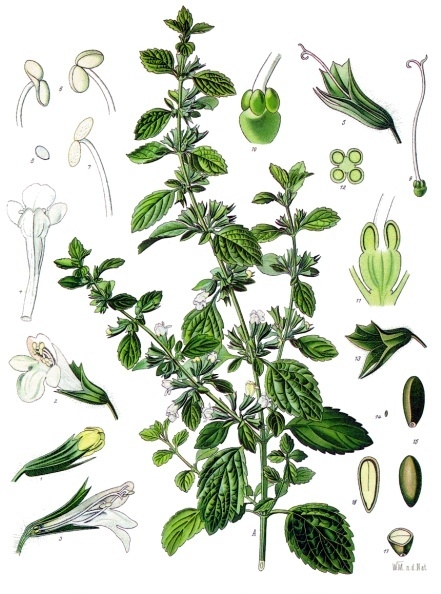
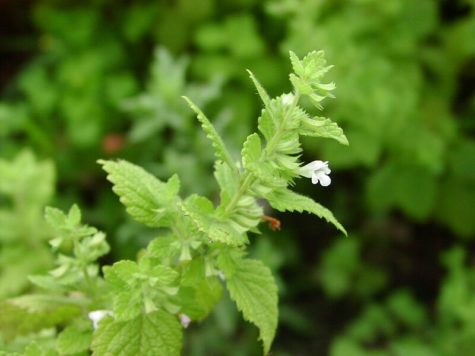
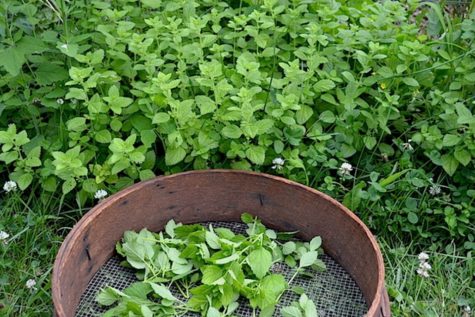
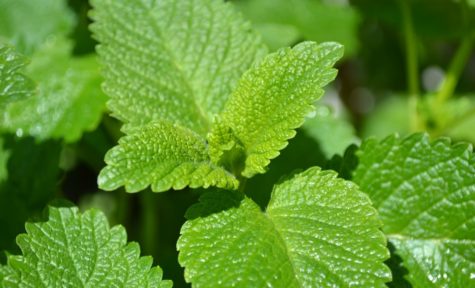
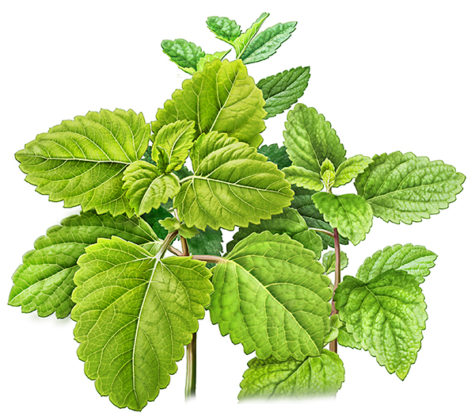
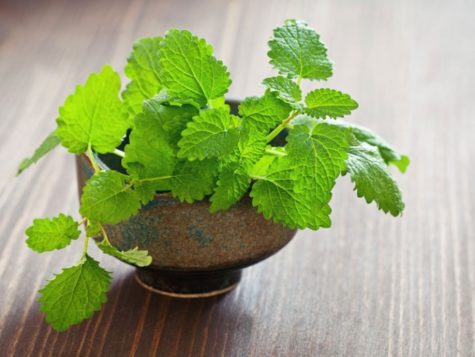
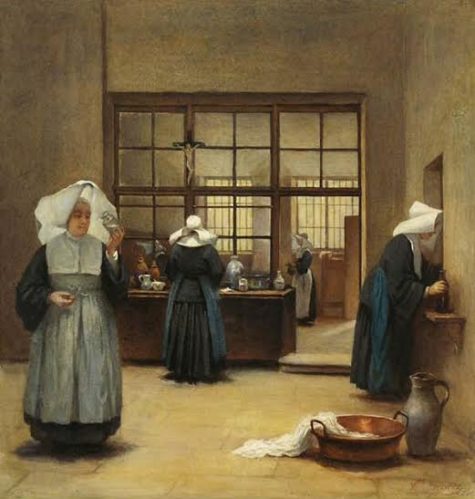
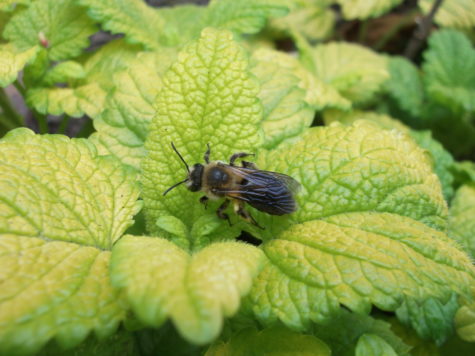
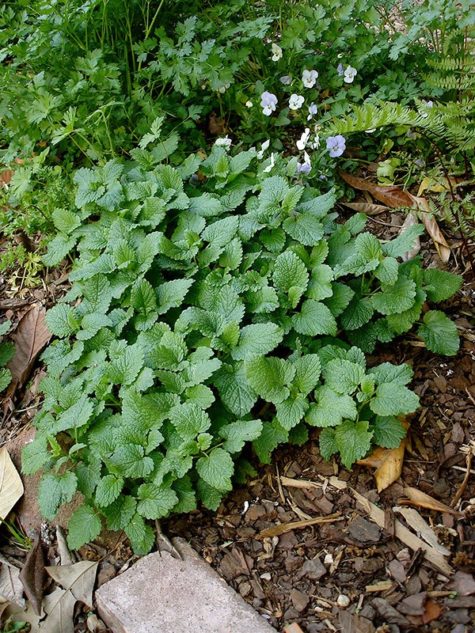
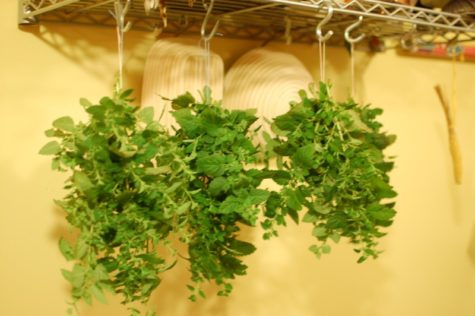


Leave a Reply